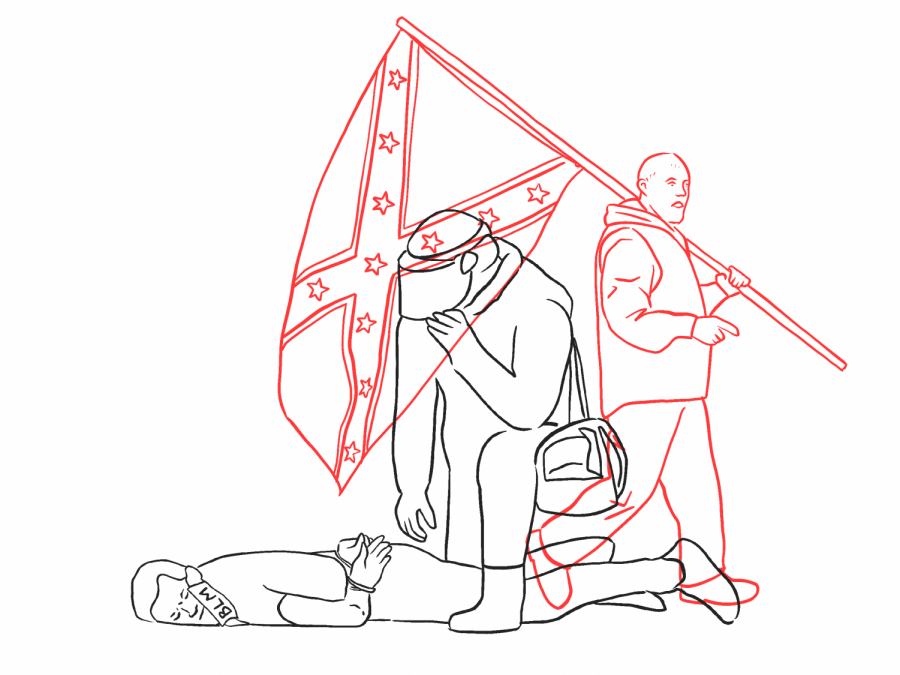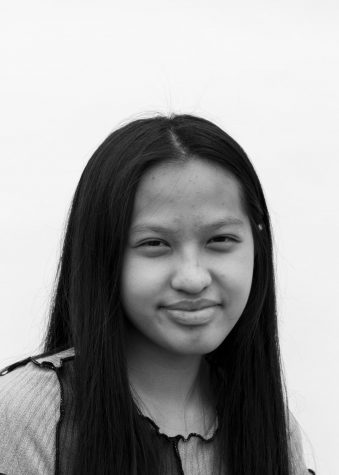Police Response to Black Lives Matter Protests in Comparison to the Insurrection
January 28, 2021
“You’ll never take back our country with weakness. You have to show strength. You have to be strong,” said now-former President Donald Trump, minutes before thousands of his supporters stormed and broke into the United States Capitol. This widely discussed event was an attempt to protest the results of the 2020 Presidential election after multiple rounds of unsuccessful court challenges and failed congressional actions. During the attempted coup, five people lost their lives, one of whom was a capitol police officer, yet only about 120 people have been arrested so far. These criminals were identified in photo evidence that proved their physical presence in the Capitol building on January 6th.
Despite the profound level of violence these armed rioters exhibited, the police responded with a disproportionately low degree of force. Many photos and videos of officers supporting the rioters surfaced on social media. One, in particular, shows protesters taking selfies with officers at the Capitol. Another reveals officers opening metal barricades to allow the rioters to enter the premises. It is disturbing to note that people who are supposed to be protecting the country supported and helped people who took part in an attempted coup.
The contrast is stark. Over the summer, during the countless protests for the Black Lives Matter (BLM) movement, the country witnessed, arguably, one of the most aggressive sides of policing. The force exercised against BLM protesters was substantially inconsistent, especially compared with the response to the Washington D.C. rioters. In the generally more peaceful BLM protests, at least 19 were killed by the police, many more injured, and more than 14,000 were arrested. Ellie Harmon ’23 makes the point, “It is disgraceful … Peaceful protestors are sprayed with tear gas and hit directly with rubber bullets. Enraged Trump supporters barge in on government property and the same force is not applied … This proves how racist our country is.” This is specifically true seeing as almost all of the rioters at the Capitol were white.
Police officers used weapons such as tear gas, rubber bullets, pepper spray, and batons to disperse peaceful BLM crowds. For example, there was one incident in Little Rock where the police deployed tear gas at kneeling protestors. In another case of police brutality, a man in his seventies was pushed by officers during a BLM protest, cracking his head open. Thankfully, he survived. These examples, and many more, demonstrate the bias of America’s police systems against Black people throughout the nation’s history.
Furthermore, in June of 2020, members of the National Guard stood in front of the Lincoln Memorial where BLM protestors held peaceful protests. There was also another case where Trump had called the police to disperse protestors by tear-gassing them. This extreme measure was uncalled for, seeing as now in January of 2021, as insurrectionists broke into the Capitol building, the president hesitated to call the National Guard. Reports reveal that Trump resisted calling the National Guard and that the Pentagon refused additional security even after the rioters got into the Capitol building. Eman Abdurezak ’23 says, “It was quite shocking to see that they were actually able to get past security, inside the Capitol building, disrupting the counting of Electoral College votes.”
Many speculate that the lack of police response to the attempted coup was due to the systemic racism that has historically been present in the United States. Abdurezak continues, “The difference in response to the rioters storming the Capitol in comparison to the peaceful Black Lives Matter protesters is frustratingly unfair and reflective of the privileges certain groups receive in this country simply based on the color of their skin … To put it plainly, if Black Lives Matter protesters were to behave in the same way as Trump supporters at the Capitol had … many lives would be lost.” Similarly, Sami Friedman-Wellisch ’23 states, “There was way more violence from police at the peaceful BLM protests … Although violence should never be the go-to response, I am not sure there was any other way to stop what happened on January sixth.”
The day after the riot at the Capitol, Joe Biden stated, “If it had been a group of Black Lives Matter protesting yesterday, they would have been treated very, very differently than the mob of thugs that stormed the Capitol.” So, why were peaceful BLM protesters considered more of a threat than armed Trump supporters storming the “House of Democracy”? Kenneth N. Salim, the superintendent of the Cambridge Public School District, said the police’s response is shamefully a “double standard.” This is, unfortunately, true; when armed Trump supporters planned an insurrection, there were few to no consequences. However, when supporters of the BLM movement organized peaceful protests, they were quickly perceived as rioters, and violence was the police’s initial response. It is unjust, and change must be made for our society to grow.











